A classic truck restoration is often more complex than they initially seem. Firstly, it’s important to remember that the term “restoration” implies the process of rebuilding a car or truck to its original state, rather than simply performing minor repairs. Therefore, most restorations typically include both exterior (frame, paintwork, etc.) and interior (engine, seats, etc.) work.
As with any other type of car project, it’s important to set a budget and establish a rough timeline before beginning. You should also have all of the essential tools and materials to complete the restoration. If you are planning your first-ever truck restoration, here is a detailed guide on where to begin.
Classic Truck Restoration Guide
There are several steps you can take to start a classic truck restoration. However, here are five essential steps to follow for this type of project.
Find The Right Truck For The Project
The first part of your basic research when preparing for a truck restoration involves selecting a vehicle that will be a strong fit for your particular project. This means choosing a truck that matches your budget and style preferences. Do not instinctively settle for the cheapest salvage truck. A significantly rusted truck – or one with a severely damaged frame – may not necessarily be your best option and may actually end up costing you more to restore. You can also try joining online truck forums for recommendations.
Give A Thorough Inspection Of What Needs To Be Done
Another key precaution you can take before beginning your restoration is to have your truck thoroughly inspected. An experienced mechanic can do this in order to get a close look at all of the work that needs to be done. After the inspection, you can start creating a list of all the materials you need and determine in what order you wish to complete the many parts of your restoration. The mechanic can advise you to use (or not use) certain materials and answer any questions you may have about the project.
Make A Schedule For Your Classic Truck Restoration
Once your truck has been carefully inspected, you can create a schedule for your restoration. Set deadlines for each aspect of the project and try to stick to them as much as possible. Most vehicle restorations take hundreds of hours of work (i.e. weeks or months, depending on the level of restoration). Therefore, it’s important to be patient as well as realistic – if you work full-time, the timeline for your project will likely be longer.
Reuse As Much As You Can
Reusing parts is not only eco-friendly; it will also save you time and money, as you will not need to purchase unneeded replacement parts. Additionally, reusing parts and bolts can potentially increase your truck’s resale value. Examples of truck parts you can reuse include the tires, alternator, engine, and transmission. According to the nonprofit organization Wheels For Wishes, “approximately 86% of a vehicle’s material content is recycled, reused or used for energy recovery.”
Only Buy Tools You Need
As tempting as it may be to purchase every major mechanical tool before beginning a truck restoration, it is generally best to simply buy the ones you need for your specific project. An even more advisable idea is to purchase your tools as you need them, rather than buying them in bulk before you start. If you search long enough, you can likely find relatively inexpensive options for tools such as welders, grinding wheels, and paint strippers.
Ultimately, you should remember not to rush your restoration and to ask for professional help. Whether you wish to drive your truck or simply display it at an auto show, it’s important to be careful when repairing and upgrading a vehicle.
Work With The Classic Truck Restoration Experts
Speak to the professionals at Robs Customs & Restorations in Manassas, Virginia, for more information on classic truck restorations. At Robs, we understand that customizing and restoring cars and trucks is not simply a hobby but a passion.
If you have a classic truck that you would like to restore, we will begin by straightening its frame, as this is essential to allowing it to be driven openly on the road. We will then move onto restoring the interior, including the seats, dashboard, and glove box. We also provide rust repair and can replace any part of the body with a higher-quality alternative. Our professionals can also perform custom paint jobs and four different types of engine swaps: LS, fuel-injected, Coyote, and Hemi.
Call Robs Customs & Restorations today at (703) 552-5001 or contact us online to receive a free truck restoration estimate.
